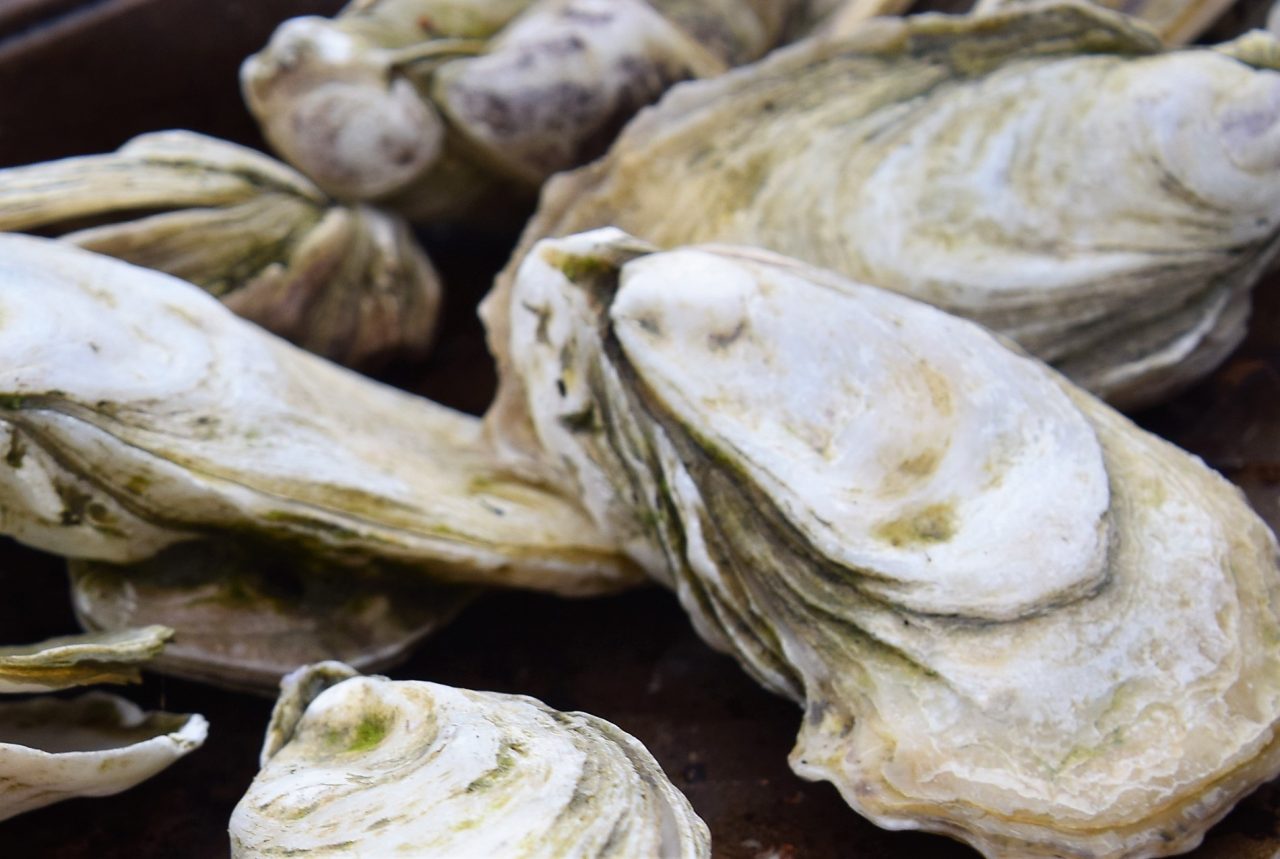
These days it may seem like every month of the year celebrates some concept or ideal to which we should all aspire. In the case of countless coastal residents and visitors, not to mention those who wish they could be here, October is a green light to pursue the lofty goal of eating more oysters.
Oysters in North Carolina waters may be harvested wild starting in October each year, but cultivated or farmed oysters can be enjoyed year-round. Nevertheless, October is a perfect time to honor the humble oyster. It’s North Carolina Oyster Month, a “shellabration” of what scientists call a keystone species, one that’s crucial to North Carolina’s marine and coastal environments.
Supporter Spotlight
“Our eastern oyster is a coastal treasure: They help to keep our waters clean and clear by filtering them, providing habitat (or homes) for up to 300 different coastal species, and being a tasty treat for humans and other animals alike,” North Carolina Coastal Federation Oyster Program Director Erin Fleckenstein told Coastal Review.
Fleckenstein, who was the longtime coastal scientist with the Coastal Federation’s Wanchese office, coordinates the statewide Oyster Blueprint, a guide for oyster restoration and protection measures in North Carolina. Its focus is on protecting water quality, creating and restoring oyster habitat, nurturing the burgeoning shellfish mariculture industry, sustaining the wild harvest of oysters and then engaging the public in this work.
Oysters are beneficial in all kinds of ways. Nutritionists at the Cleveland Clinic say there are reasons to love oysters, “even if you hate them.” They’re a low-calorie, high-protein food loaded with nutrients that are deficient in a significant portion of people, especially as they age – nutrients such as copper, iron, selenium and zinc, and vitamins B-12 and D.
More than a nutritious culinary treasure, oysters also serve important functions in the marine environment, and oyster cultivation is a sustainable way of producing seafood. Advocates tout the need for no added food, chemicals or antibiotics, and their harvests relieve pressure on wild oyster populations.
And both wild and farmed oysters are filter feeders, improving water clarity and quality. Advocates, including the Coastal Federation, often point out that a single oyster can filter up to 50 gallons of water a day. The improved clarity benefits the entire ecosystem.
Supporter Spotlight
“They really are to be celebrated and I’m excited that we’ve been able to partner with North Carolina Sea Grant, the Department of Cultural and Natural Resources, North Carolina Shellfish Growers and the North Carolina Oyster Trail to honor them in a monthlong celebration,” said Fleckenstein.
The Coastal Federation has partnered with Sea Grant and the North Carolina Department of Natural and Cultural Resources in organizing Oyster Month festivities under the umbrella of the NC Oyster Trail. The NC Oyster Trail provides experiences intended to help sustain oysters and oyster growers, “resulting in economic, environmental and social benefits to the state’s seafood industry and coastal communities,” according to its website.
Sea Grant Coastal Economist Jane Harrison recently said that North Carolina Oyster Month events “highlight the ecology, culture, economy, and history related to this vital resource.”
The Department of Natural and Cultural Resources has published a calendar of events for Oyster Month.
The Coastal Federation is hosting the following Oyster Month events:
- Oct. 9 Volunteer event at Morris Landing.
- Oct. 12 Oysters Uncovered: Kayak tours.
- Oct. 12 Green Drinks: Oyster Month Focus.
- Oct. 19 Oysters Uncovered: Kayak tours.
- Oct. 24 Ambassador’s Program: Oyster Month focus.
- Oct. 26 Oysters Uncovered: Kayak tours.
- Oct. 27 Tide to Table: evening event with Coastal Studies Institute.
Also in October, look for messaging on the importance of oyster shell recycling and how you can do your part.
And importantly, eat lots of delicious oysters.







